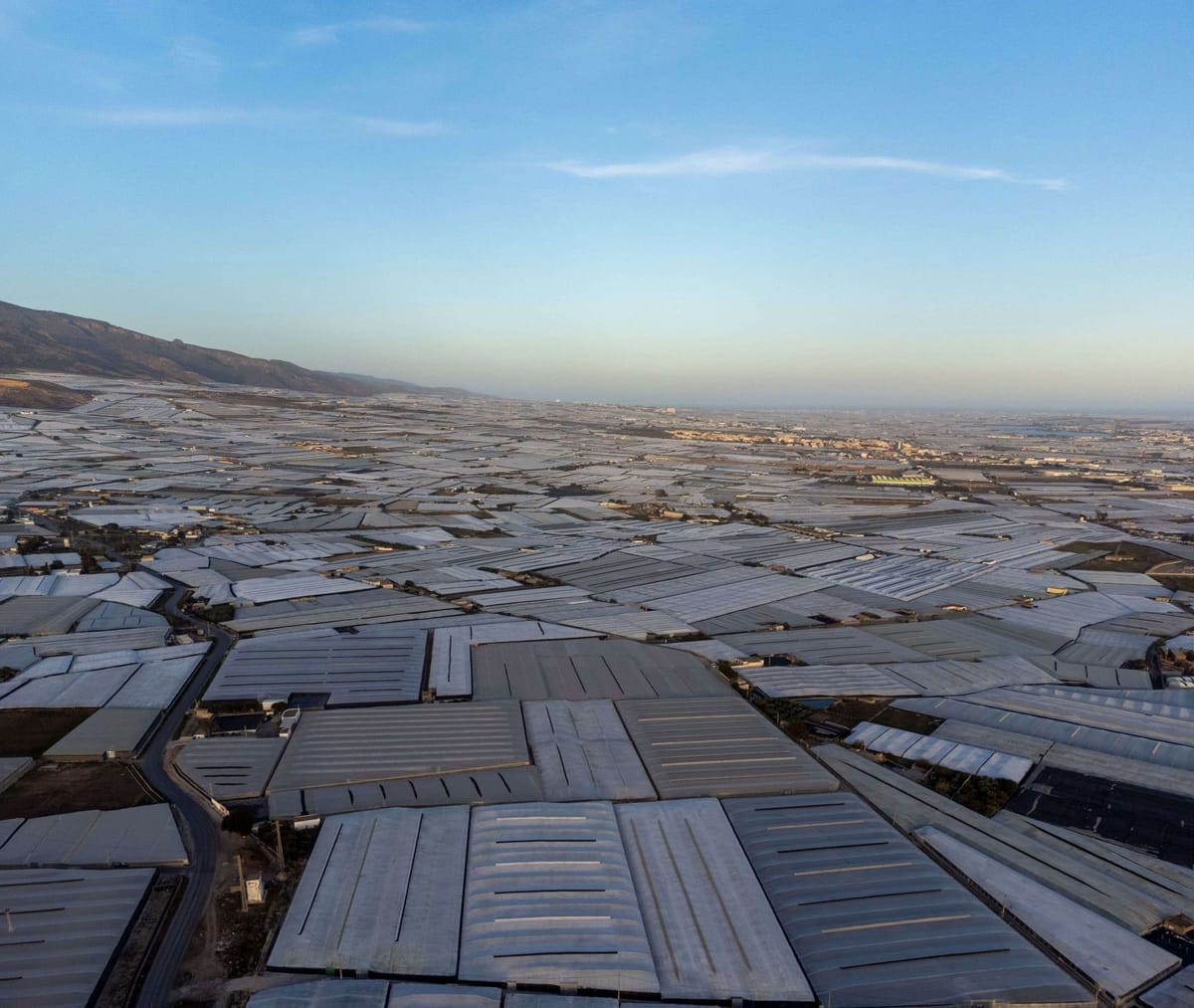How Almería’s greenhouses are draining its water
Greenhouses transformed Almería into an agri-export giant. But this success story hides a growing crisis: water loss, pollution, and social injustice.

In Almería, Spain, plastic greenhouses thrive. But the land, the water, and the people are paying the price, writes Neal Haddaway.
The southern Spanish province of Almería tells a striking tale of transformation. Known for its arid climate and scarce rainfall — just 200 mm a year — it is the driest region in continental Europe. Yet over the past 80 years, Almería has turned into one of the continent’s agricultural powerhouses.
More than 320 square kilometres of plastic-covered greenhouses now sprawl across its dry terrain, exporting around 3.5 million tonnes of fruits and vegetables annually. Tomatoes, peppers, courgettes, and cucumbers leave Almería for supermarkets across Europe. But the region’s success masks a deeper crisis.
Exporting water in disguise
Despite the greenhouses' efficiency — producing yields up to 30 times higher than traditional farming — they rely on one irreplaceable resource: water. And there’s very little of it.
Nearly 80% of Almería’s irrigation water comes from deep aquifers. Yet because over 90% of fruits and vegetables consist of water, every export is effectively a shipment of what researchers call "virtual water". The province is losing more than 3 million cubic metres of water a year through this trade — an unsustainable model in the face of climate change and intensifying drought.
Pollution beneath the plastic
The high productivity also carries an environmental cost. Fertilisers and pesticides used to maintain crop quality leach into the groundwater, polluting the aquifers.
Surface water across Almería has turned bright green, thick with algae fed by excess nutrients. In many areas, farmers bleach water in storage ponds to prevent clogging their irrigation systems, only worsening the chemical contamination.
This toxic brew spills over into protected areas. At Punta Entinas-Sabinar Nature Reserve, a sanctuary for flamingos and wading birds, pollution and expanding greenhouses now threaten the fragile wetland ecosystem.
A fraying social fabric
Almería’s agricultural boom has changed more than the landscape. Its social fabric is also under strain.
As water becomes scarcer and market pressures increase, small-scale farmers struggle to keep up. Many are forced to sell their land to large agribusinesses, accelerating the concentration of power and resources.
Meanwhile, over 120,000 migrant workers — many undocumented — labour inside the greenhouses. They face low wages, no job security, and appalling living conditions. In makeshift shelters called chabolas, they often lack access to running water — ironically, in the very industry built on it.
A fragile future
The model that made Almería “Europe’s orchard” is now cracking. Its water is running dry. Its aquifers are polluted. Its people — especially the most vulnerable — are being left behind.
As the climate warms and rainfall patterns shift, the risks multiply. Almería’s future may no longer lie in more greenhouses or deeper wells, but in rethinking what sustainable agriculture looks like in a time of limits.
Because in Almería, prosperity has come at a price. And the bill is coming due.






Left: Tomatoes dominate Almería’s crops — over 700,000 tonnes are harvested yearly. Center: One in four bell peppers in UK supermarkets comes from this narrow stretch of land. Right: Plastic covers help retain moisture and reduce soil erosion, essential in Almería’s arid conditions. Photos: Neal Haddaway







Left: Flamingos feed near Punta Entinas-Sabinar, their habitat under threat from expanding greenhouses. Right: Migrant workers live in sheds among the crops, many without water or sanitation. Photos: Neal Haddaway
